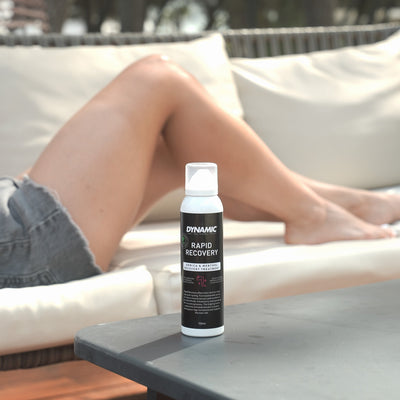Not all lubes are the same. If you want to get the best performance out of your drivetrain, you should use the right chain oil for the right conditions. We will show you the differences between the various lubricants and how to apply the chain oil.
Contents
Lubes - Properties
Before we talk about the different lubes, we would like to take a closer look at the properties of chain oil.
Chain oil should…
- crawl into the spaces between your chain links and minimize friction
- protect your chain from corrosion / rust
- delay the wear of your drivetrain
- stick to your chain in the harshest weather conditions
- prevent the dirt from sticking

Every chain oil has the same tasks – only it is needed in a different composition and consistency depending on the weather conditions to perform on the best way.
The lubricant should therefore ideally be selected individually depending on the condition.
What are the differences between the lubes?
The following rule of thumb applies to the different lubricants: The thicker the lube, the longer it will stick to the chain without being washed out. The thinner the lube, the less dirt it attracts. Lubes therefore differ in consistency, creep ability and longevity.

Chain oil for extremely dry conditions: Dry lube
In extremely dry weather conditions, you need a lube that is very dirt repellent. This is because dust and dirt on your chain cause much faster wear. For this reason, a very thin chain oil is used in dry conditions, which is also called a dry lube. It penetrates easily into the chain links and leaves only a very thin protective film. Since the chain oil is very thin, you may have to relubricate it more often than with thicker chain lubricants.
Chain oil for extremely wet conditions: Wet lube
Wet lubricant, in contrast to dry lubricant, is very viscous. As the name suggests, it is more suitable for wet weather conditions. Due to the alcohol it contains, the oil’s creeping ability is increased, and the chain oil can spread even better. Our wet lube really sticks to your chain for a long time and is not washed off so quickly by rain or wetness. It also protects against rust and wear.
Chain oil for extreme weather conditions: Rainy day lube
If you are riding in continuous rain for several days in a row, we recommend our Rainy day lube. Due to its lubricating properties, this lube sticks to the chain much longer than conventional wet lubes. Rainy day lube is also used by professional teams in extreme weather conditions.
Chain oil for every cause: All round lube
Whether dry or wet, with our Bio All Round Lube you are prepared for any condition. In extreme weather conditions, special lubes are of course the better choice. But for all-weather riders who don’t want to constantly change the chain oil, we definitely recommend our universal chain oil. In addition, this chain oil is biodegradable.

Chain oils for e-bikes
Do electric bicycles and e-bikes need a special chain oil? Our answer is “yes”! A motorized bike puts much higher tensile forces on the bicycle chain. For this reason, we have optimized our e-bike lube to absorb these tensile forces safely and comfortably. It also protects your chain from rusting and minimizes friction in the drive in all weather conditions.
How to apply the chain oil?
For best results, we recommend cleaning your chain with our chain cleaner before oiling. Without residues and dirt, the chain oil can develop its best effect. Don’t forget to measure your chain wear regularly when cleaning. An elongated chain can break in extreme cases.
After cleaning the chain, you can apply one drop of chain oil per chain link to the inside of your chain. To complete this, move the pedals backwards to reach every part of your chain. Let the chain rotate a little and shift a little. You can then remove excess chain oil with a cloth or rag. Shake the lube well before applying it.
You can find a detailed guide to chain maintenance on the website of our brand ambassador Lisa.


Related blog posts
La bonne pression des pneus est essentielle pour la vitesse, le confort et le contrôle. Trop basse, elle augmente la résistance au roulement, trop haute, elle réduit la stabilité. Avec des outils précis comme la Turblo et la Turblo+, tu règles à chaque fois la pression parfaite, à la maison comme sur la route, pour garantir des performances maximales et une confiance totale à chaque sortie.
Pendant un mois entier, Road.cc a testé Barkeeper Pro et le produit d’étanchéité de Silca. Barkeeper Pro a obtenu un score 40 % plus élevé et a été décrit comme un produit d’étanchéité extrêmement efficace !




